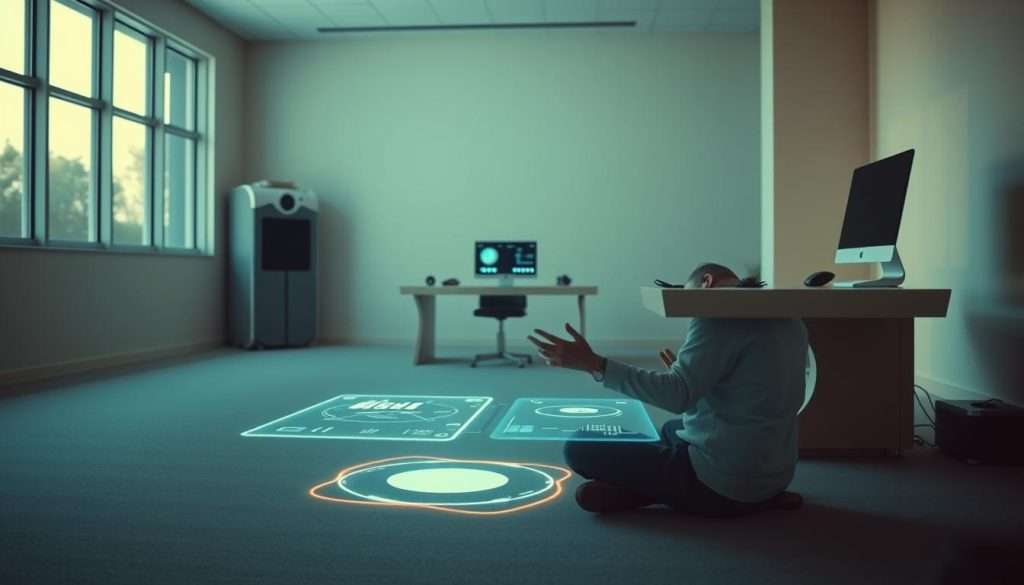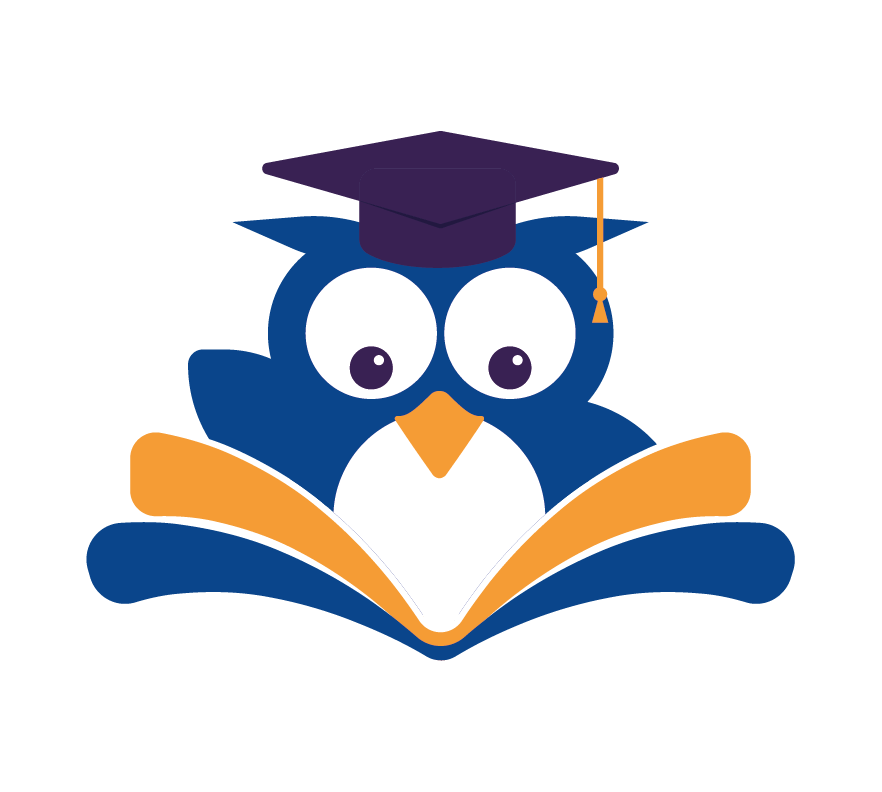“The beautiful thing about learning is that no one can take it away from you.” B.B. King’s words hit home. We see education as a key to growing and changing ourselves.
Just like how our digital stylists pick outfits that match your style, we aim to make learning fit you. We want to help you control your learning journey. This way, it’s both fun and effective for you.
We’re on a mission to make studying fun and fulfilling. With the right strategy, you can reach your highest potential and make your dreams come true.
Key Takeaways
- Personalized learning experiences tailored to your needs and goals.
- Empowering education that fosters personal growth and self-improvement.
- Effective study methods that make learning enjoyable and rewarding.
- A supportive approach to help you achieve your aspirations.
- Transforming the way you study, making it a positive and engaging experience.
The Transformative Power of Personal Growth
Committing to continuous learning and personal growth can change our lives. It’s not just about getting new skills. It’s about becoming the best version of ourselves.
How Continuous Learning Reshapes Your Brain
Learning continuously changes our brain’s structure and function. This is thanks to neuroplasticity. Our brain can make new connections as we age.
Neuroplasticity and Cognitive Benefits
Neuroplasticity makes our brains more adaptable and efficient. It improves memory, problem-solving, and creativity. Some benefits include:
- Improved memory capacity
- Enhanced problem-solving skills
- Better adaptability to new situations
The Connection Between Learning and Wellbeing
Learning new things boosts our brain and wellbeing. It increases confidence and makes us feel accomplished. It also helps us see life more positively.
Why Self-Development Matters in Today’s World
In today’s fast-changing market, self-development is key. Companies like Colibri Real Estate offer flexible education. This helps professionals grow and succeed. By focusing on personal growth, we stay ahead and reach our goals.
Mapping Your Current Knowledge Landscape
Starting a journey of self-discovery means understanding what you know now. To improve your learning experience, you need to know what you already know and what you need to learn.
Practical Self-Assessment Techniques
Knowing where you stand in your education is important. Use skills inventories and personal SWOT analysis to see your strengths and weaknesses.
Skills Inventories and Personal SWOT Analysis
- Make a detailed list of your skills and rate how good you are at each one.
- Do a personal SWOT analysis to find out where you can get better and where you can grow.
For instance, a 30-Day “Best Self Health & Healing Era” Plan can help you start fresh and grow. It shows how self-assessment can help you grow.
Feedback Collection Methods
Getting feedback from others or thinking about it yourself can give you great insights. Use this feedback to change how you learn and focus on what’s most important.
Identifying High-Impact Growth Opportunities
After you’ve looked at what you know, find out where you can grow the most. Focus on these knowledge exploration areas to get the most out of your learning.
Crafting Meaningful Learning Goals
Setting meaningful learning goals is key to a great educational journey. Your learning journey is special, and the right goals keep you on track and motivated.
Developing SMART Learning Objectives
To set effective goals, they must be SMART. This means they are Specific, Measurable, Achievable, Relevant, and Time-bound.
Specific and Measurable Goal Setting
First, define what you aim to achieve. Instead of “I want to be better at my job,” say “I want to improve my project management skills by taking an online course in three months.”
Creating Achievable Timeframes
It’s important to set realistic deadlines. Break big goals into smaller tasks and set times for each. This keeps you moving and lets you see your progress.
Connecting Learning Goals to Life Purpose
Your learning goals should match your life’s purpose, including career advancement and personal growth.
Career Advancement Planning
Think about how your goals can boost your career skills and open new doors. Getting a new certification, for example, can be a big step in professional development.
Personal Fulfillment Alignment
Make sure your goals also help you grow personally. This connection keeps you motivated on your learning path.
| Goal Type | Example | Benefit |
|---|---|---|
| Career Advancement | Completing a certification course | Enhanced job prospects |
| Personal Fulfillment | Learning a new language | Increased personal satisfaction |
Designing Your Personalized Learning Journey
A well-crafted learning journey can change your life. It gives you the skills you need to succeed. To do this, you must design an educational path that fits your needs and goals.
Charting Your Educational Path
Deciding on your educational path is key. You have two main options: sequential and parallel learning.
Sequential vs. Parallel Learning Approaches
Sequential learning means focusing on one subject at a time. This allows for a deep understanding. Parallel learning, by contrast, involves studying multiple topics together. It helps you see connections between different areas of knowledge.
Balancing Breadth and Depth of Knowledge
It’s important to balance breadth and depth in your learning. You can choose to explore many topics or focus deeply on a few. For example, when learning a new language, start with basic vocabulary and grammar. Then, move on to more complex expressions.
Selecting the Right Learning Resources
Choosing the right learning resources is crucial. You need materials that are both informative and engaging.
Evaluating Quality of Learning Materials
When picking learning resources, look at their relevance, accuracy, and effectiveness. For instance, Colibri Real Estate has been a trusted source for real estate education for over 25 years. This shows the value of choosing resources with a proven track record.
Matching Resources to Your Learning Style
It’s also important to match your learning resources to your style. Whether you learn best through visuals, sounds, or hands-on activities, there are resources for you.
| Learning Style | Resource Type | Examples |
|---|---|---|
| Visual | Videos, Infographics | YouTube tutorials, educational posters |
| Auditory | Podcasts, Audiobooks | Learning podcasts, audio lectures |
| Kinesthetic | Interactive Simulations, Hands-on Activities | Virtual labs, practical workshops |
Essential Study Techniques for Maximum Retention
Learning well isn’t just about putting in the hours. It’s about using smart methods to keep what you learn. To improve your learning experience, pick techniques that help you remember more.
Active Learning Strategies That Work
Being actively involved in your studies is key for knowledge exploration. Two effective methods are:
- The Feynman Technique, which breaks down tough ideas.
- Retrieval Practice, which boosts your ability to recall.
The Feynman Technique for Deep Understanding
The Feynman Technique means explaining a concept as if you’re teaching it. This way, you make sure you really get it and spot any knowledge gaps.
Retrieval Practice Methods
Retrieval practice is about recalling info from memory without looking at your notes. You can use flashcards or quizzes to do this. It really helps you remember better.
Memory-Enhancing Study Systems
To improve retention even more, try memory-enhancing study systems. These include:
- Spaced Repetition Scheduling, which schedules review times well.
- Mind Mapping, which organizes info visually.
Spaced Repetition Scheduling
Spaced repetition reviews material at the best times to keep it in your memory. It helps you avoid forgetting and supports continuous learning. By reviewing at the right intervals, you beat the forgetting curve.
Mind mapping is a visual way to connect ideas and concepts. It makes it easier to review and remember lots of info. It’s great for subjects with lots of connections.
Leveraging Technology on Your Learning Journey
Using the right digital tools can really boost your learning. We’re proud of our history of innovation and quality programming. This can help a lot in your educational path.
Digital Tools for Self-Directed Learners
Self-directed learners find many digital tools helpful. Note-taking and knowledge management apps are key for organizing and tracking your learning.
Note-Taking and Knowledge Management Apps
- Evernote: A powerful tool for note-taking and organizing your research.
- OneNote: Offers a comprehensive note-taking experience with tagging and searching capabilities.
Progress Tracking Software
It’s important to track your progress to stay motivated. Tools like Strides and Habitica help you set and reach goals.
| Tool | Purpose | Key Features |
|---|---|---|
| Evernote | Note-taking | Tagging, searching, and organization |
| Strides | Progress tracking | Goal setting, habit tracking |
Navigating Online Learning Platforms
Online learning platforms can be overwhelming. But, choosing wisely between free and paid resources is key for your growth.
Free vs. Paid Resources: Making Smart Choices
When picking between free and paid resources, think about the content’s quality and relevance.
“The key is not to prioritize what’s on your schedule, but to schedule your priorities.” – Stephen Covey
Creating Custom Learning Paths Across Platforms
To make a custom learning path, first identify your goals. Then, pick resources that match those goals. 
By using these digital tools and strategies, you can improve your learning journey and reach your goals.
Creating Environments That Foster Learning
The environment around you is key to your learning experience. A well-designed space can boost your productivity and help you grow. It also makes it easier to learn new things.
Optimizing Physical Study Spaces
Your study space is more than a place to sit. It’s a place for skill development. Focus on ergonomics and reducing distractions to make it better.
Ergonomics and Productivity Design
Good ergonomics helps you stay focused. Get a comfy chair, keep your computer at eye level, and have good lighting. This reduces eye strain.
Minimizing Distractions
To stay focused, cut out distractions. Make your study area quiet and organized. Use noise-cancelling headphones or background music to help you concentrate.
Building Your Learning Community
Learning doesn’t have to be alone. A community can offer motivation and support. Let’s look at how to find the right people to share your journey.
Finding Mentors and Study Partners
Connecting with mentors or study partners can improve your learning. Look for people who share your goals or know a lot about what you’re interested in. You can find them online or in local groups.
Participating in Knowledge-Sharing Groups
Joining groups to share knowledge is great for staying updated. These groups are online or in-person. They let you share ideas and learn from others.
| Learning Environment Aspect | Tips for Improvement |
|---|---|
| Physical Space | Ergonomic furniture, good lighting, minimal distractions |
| Learning Community | Find mentors, join study groups, participate in online forums |
Sustaining Motivation Throughout Your Learning Journey
To reach your learning goals, keeping up the pace and staying motivated is key. Starting a new career or learning path can be thrilling yet daunting. But with the right strategies, you can beat hurdles and thrive in your continuous learning journey.
Psychological Techniques for Learning Momentum
Psychological methods can greatly boost your drive. Two top strategies are Implementation Intentions and Habit Stacking.
Implementation Intentions and Habit Stacking
Implementation intentions help by planning when and where to do a task, making it easier to follow through. Habit stacking takes it further by adding new habits to your daily routine. For instance, starting a study habit can be linked to your daily coffee time.
Managing Motivation During Difficult Phases
When times get tough, keep your eyes on your learning journey and your goals. Breaking down big tasks into smaller ones helps keep you moving forward.
Reward Systems That Reinforce Progress
A good reward system can really fire up your motivation. It’s all about celebrating your wins and finding the right mix of internal and external rewards.
Milestone Celebrations
Marking your achievements along the way boosts your motivation. Whether it’s finishing a tough course or hitting a skill milestone, celebrating these moments is vital.
Intrinsic vs. Extrinsic Motivation Balance
While external rewards like certificates can motivate, don’t forget the joy and growth from learning itself. Focusing on personal satisfaction is just as important.
| Technique | Description | Benefit |
|---|---|---|
| Implementation Intentions | Specify when and where you will perform a task | Increased follow-through |
| Habit Stacking | Integrate new habits into your existing routine | Enhanced habit formation |
| Milestone Celebrations | Recognize and celebrate achievements | Boosted motivation |
By using these strategies in your learning journey, you’ll find it easier to stay motivated and reach your career advancement goals.
Overcoming Learning Obstacles and Plateaus
Starting your learning journey comes with obstacles. You might face procrastination, too much information, or the need for perfection. These can slow you down. It’s key to get past these to learn well.
Defeating Procrastination and Resistance
Procrastination is a big learning block. Try The Pomodoro Technique for focused work in 25-minute chunks with 5-minute breaks. Or use Time Blocking to set learning times without distractions.
The Pomodoro Technique and Time Blocking
Let’s look at these methods:
| Technique | Description | Benefits |
|---|---|---|
| Pomodoro Technique | 25 minutes of focused work + 5-minute break | Improved concentration, regular breaks |
| Time Blocking | Scheduling dedicated learning time | Eliminates distractions, enhances productivity |
Overcoming Perfectionism in Learning
Perfectionism can hold you back. Focus on progress, not perfection. Set achievable goals and celebrate small wins. Our Pass or Don’t Pay Guarantee shows how progress leads to success.
Strategies for Information Overload
With so much info out there, it’s easy to feel lost. You need to pick what’s important.
Curating Knowledge Effectively
To deal with info overload, use frameworks to choose what to learn. Check if the info is relevant and credible. Then, pick what aligns with your goals.

By using these strategies, you can beat common learning hurdles. This way, you keep moving forward in your learning and career growth.
Applying New Knowledge in Real-World Contexts
Learning is truly tested when you use new knowledge in real life. It’s key to move from just knowing to actually doing. This makes learning more than just theory.
The Practice-Feedback-Refinement Cycle
Using the practice-feedback-refinement cycle is a great way to apply what you’ve learned. It means practicing, getting feedback, and then improving your skills.
Creating Application Opportunities
To begin, find chances to use what you’ve learned. This might mean taking on new projects, volunteering, or trying new things every day. For example, if you’re learning a new language, talk to native speakers or watch TV shows in that language.
Soliciting and Processing Constructive Feedback
After using your new knowledge, ask for feedback. Get it from colleagues, mentors, or even yourself. Use this feedback to make your skills better.
Teaching as a Path to Mastery
Teaching others is another great way to apply what you’ve learned. It helps you understand better and learn from your students’ views.
Techniques for Knowledge Sharing
To share your knowledge well, think about making tutorials, leading workshops, or writing blog posts. For instance, Learn More about Building the Future of Real Estate shows how sharing knowledge can be both useful and fun.
Building Portfolios of Applied Learning
As you use and teach new knowledge, create a portfolio of your skills and experiences. This could be a physical or digital collection, like a website or LinkedIn profile. It proves your growth and skills, which helps in your career.
Measuring Progress and Evolving Your Approach
As you move through your learning journey, checking your progress is key. This helps you see what’s working and what needs work. You can then make your educational path better.
Effective Self-Assessment Methods
To really know how you’re doing, you need good self-assessment tools. Two great ways are:
- Keeping learning journals to think about your experiences and what you’ve learned.
- Using both quantitative and qualitative progress indicators for a full picture of your growth.
Learning Journals and Reflection Practices
Writing in a learning journal is a way to reflect on your learning. By jotting down your thoughts, questions, and insights, you can spot patterns and areas to focus on.
Quantitative and Qualitative Progress Indicators
Quantitative signs, like how much you’ve finished and your test scores, show your progress clearly. Qualitative signs, like how confident you feel or how well you understand, give a deeper look at your learning. Together, they paint a complete picture of your growth.
Strategic Pivots in Your Learning Path
Being flexible is crucial for continuous learning. Sometimes, you need to change your strategy.
When to Persist vs. When to Redirect
Knowing when to keep going and when to change is important. If you’re really struggling, it might be time to try something new.
Incorporating New Learning Methodologies
Being open to new ways of learning can make your education better. Trying out new study methods or using different technology can really help your progress.
Conclusion: Embracing the Lifelong Learning Mindset
In today’s fast world, the path to success never ends. For over 25 years, Colibri Real Estate has helped professionals grow in their careers. They show how important it is to keep learning and improving.
Choosing to learn for life changes you in big ways. It helps you grow personally and professionally. This article has shown how loving to learn can change your life.
Keep moving forward and show your dedication to getting better. Stay curious and ready for new challenges. Your next big success is waiting – keep learning and aiming high.

